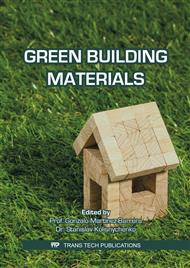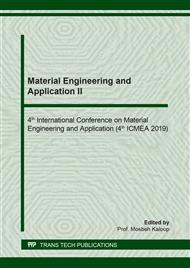p.150
p.155
p.161
p.166
p.171
p.177
p.182
p.188
p.193
Crushed Rock Geopolymer as a Future Road Construction Material: An Evaluation on Strength Performance and Compaction Characteristics
Abstract:
To be more sustainable in the road construction industry, the rock-based geopolymer concept should be applied with an aim to create a geopolymer-based road structural layer. The research program studied on the geopolymer for road construction was newly established at Chiang Mai University, Thailand. This study concentrated in a preliminarily evaluation of strength performance and compaction characteristics of crushed rock-based geopolymer (CR-GP) to partially or totally replace the usage of ordinary Portland cement (OPC) as a road stabilizing agent. The standard crushed rock (CR), complying with the standard of road base materials, was obtained from a real construction field. The experiment on CR gradation, compaction and compressive strength were carried out. The results showed that CR of a finer grading curve with higher surface areas tended to better react with alkaline activators, resulting in relatively high compressive strength. The mechanical modification with compaction is one of the simplest methods for strength improvement. It found that higher compactive efforts (the modified compaction), higher densification than that of the standard compaction, corresponding to the compaction theory of soil mechanics. CR-GP having an ideal (reconstituted) grading curve achieved higher compressive strength than that of the standard grading one of a well-graded pattern. Overall, it could be concluded CR-GP has intrinsic compaction characteristics of which at its optimum point of compaction, CR-GP could address the minimum requirement for road standard in terms of compressive strength, by which it could be used as an alternative material in replacing the consumption of OPC.
Info:
Periodical:
Pages:
171-176
Citation:
Online since:
May 2020
Price:
Сopyright:
© 2020 Trans Tech Publications Ltd. All Rights Reserved
Share:
Citation:



